Overview
Over the course of five days, a group of stakeholders involved in the land use decision-making process in Devon worked together as a team to create a prototype decision support tool aimed at facilitating carbon-focused land use decisions in the rural environment. After the prototype was developed, it was tested by a range of intended users to assess its usability and effectiveness.
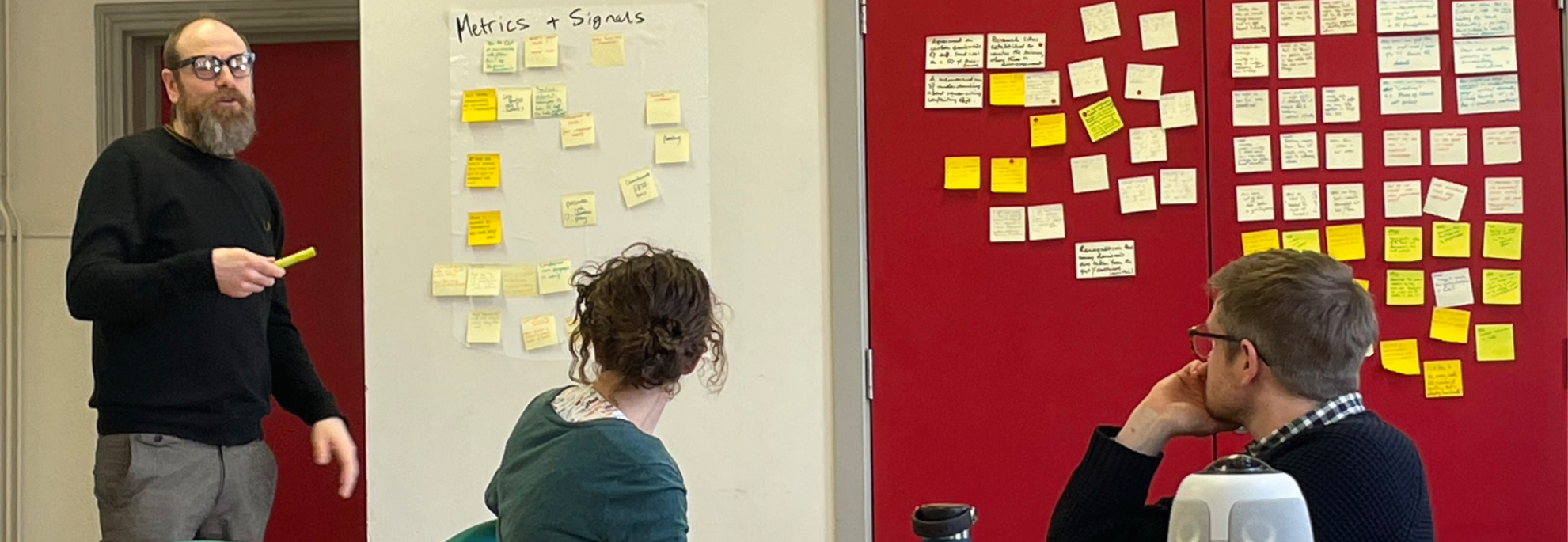 Capturing notes during the design sprint.
Capturing notes during the design sprint.
This case study briefly describes the activities of this design sprint, the outcomes and the lessons learned.
Activities
We set out to investigate how data and digital tools can help consider and understand the effects that land use decisions have on carbon sequestration and storage in the context of soil, woodland/ forestry and peatlands.
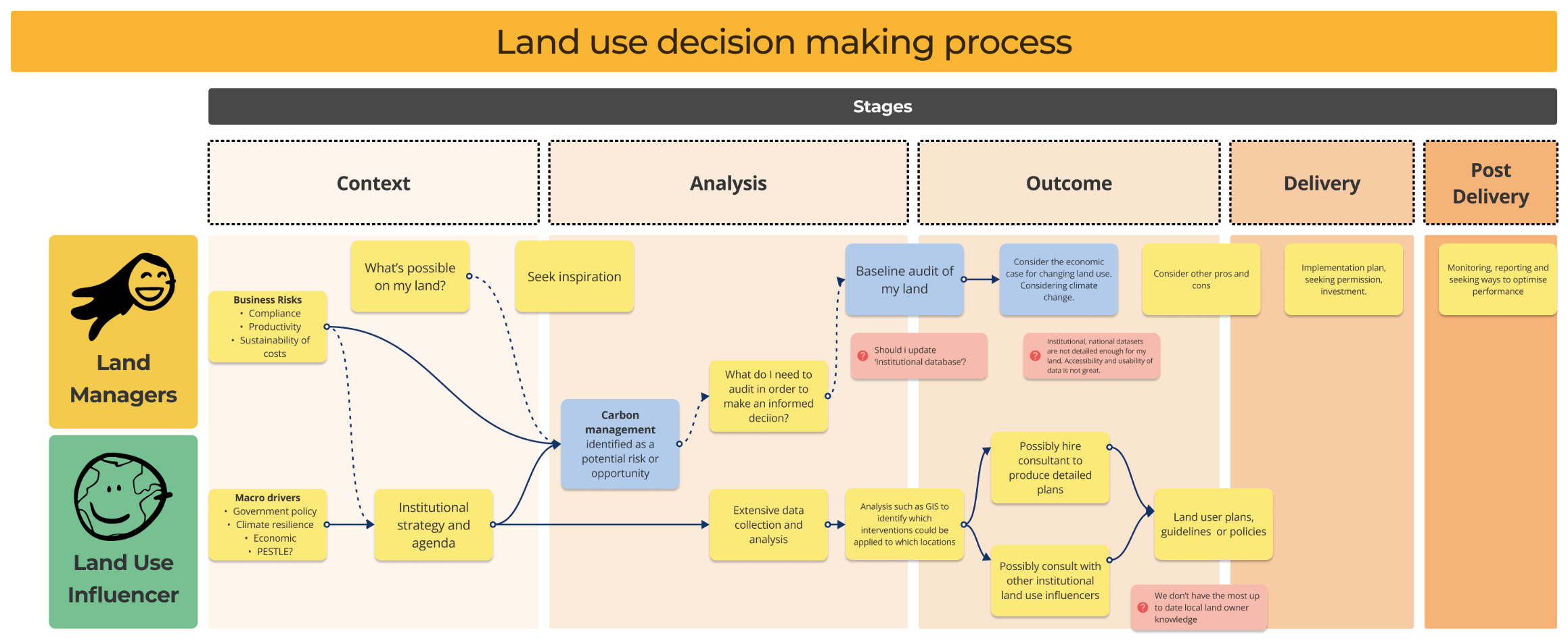 The user journey for two key user groups - Land Managers and Land User Influences
The user journey for two key user groups - Land Managers and Land User Influences
We ran the design sprint for a full five days. This was necessary due the complex nature of the challenge being solved. For less demanding challenges and stakeholders with prior design sprint experience, a shorter sprint of 2 or 3 days is also viable.
The goal of the first day was to encourage everyone to share what they already know and develop a common understanding with the rest of the group. By starting at the beginning (even if some people are already familiar with the problem), it nudges the group into a beginner’s mindset and leads to fresh solutions.
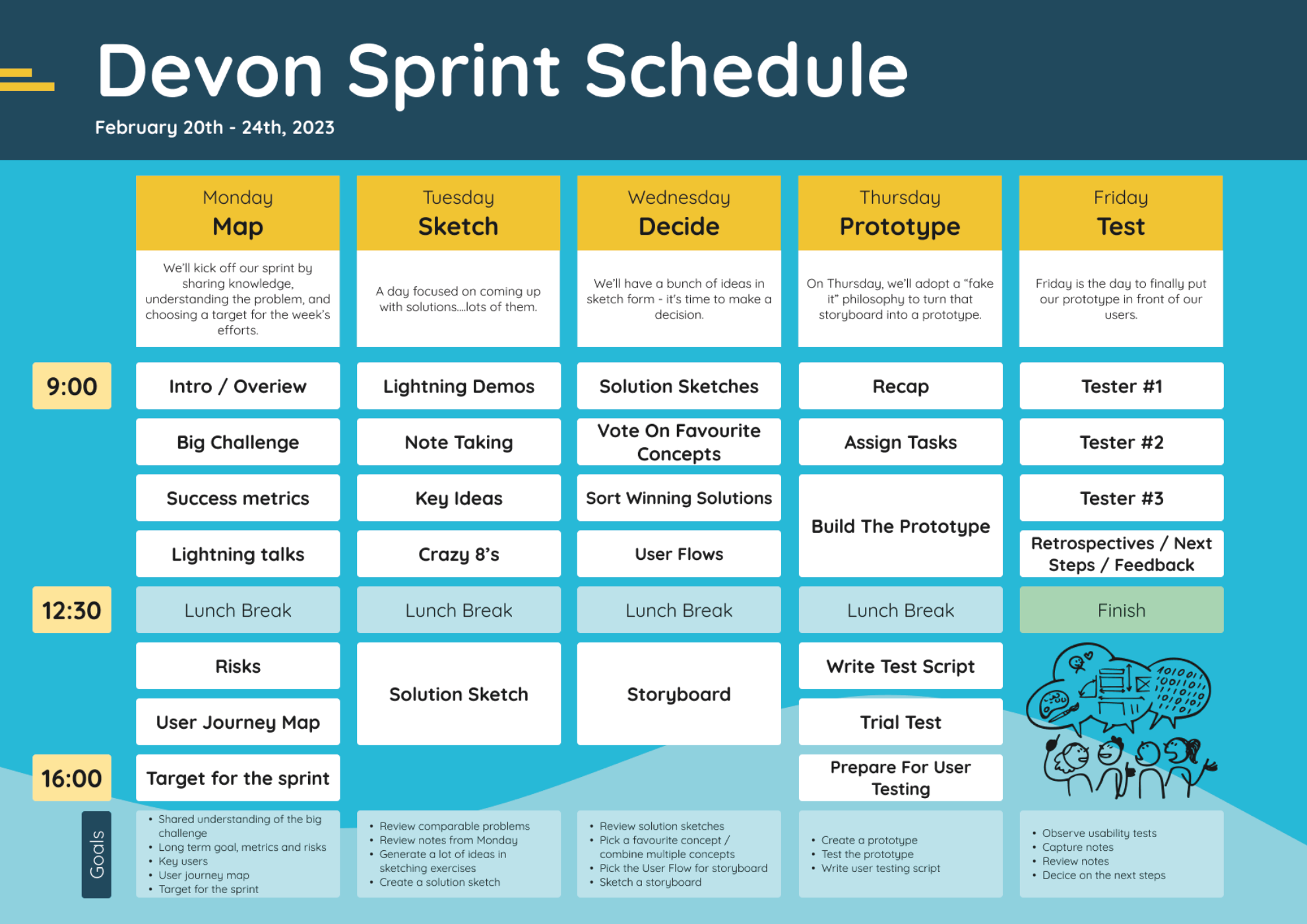 The user journey for two key user groups - Land Managers and Land User Influences
The user journey for two key user groups - Land Managers and Land User Influences
The second day of the design sprint was about finding inspiration, looking back at the decisions made during Day 1, and starting to assemble possible solutions. Now that the team has narrowed down a problem space, it was time to start the idea generation process with sketches.
Day three was focused on generating and selecting the best solutions to the problem or challenge identified on the previous day and storyboarding the most promising idea that will be prototyped the following day.

The purpose of day four was to create a realistic, interactive prototype of the chosen solution. The prototype was designed to simulate the key features and interactions that users will have with the final product.
On day five of the design sprint, user testing was conducted to validate the prototype created on day four. User testing involved observing and gathering feedback from potential users as they interact with the prototype. The insights gained from user testing were then used to make final adjustments to the design and to support writing recommendations for future development.
The interactive prototype was created using Figma design and prototyping tool and can be accessed in a web browser using the following link: https://tinyurl.com/nldp-prototype
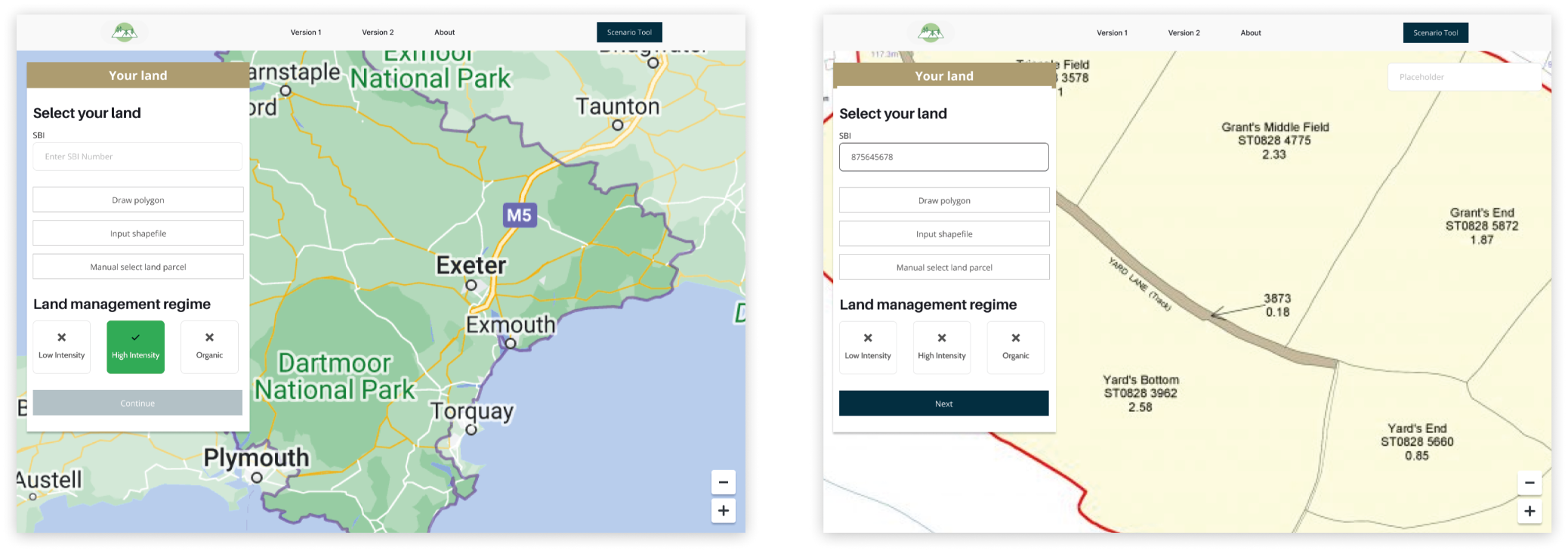 Prototype screenshots
Prototype screenshots
Lessons learned
The design sprint and prototype led to an understanding that a suite of spatially explicit data and decision support tools is integral to a land use framework.
Having access to easy-to-use data is a critical part of having informed discussions around land use change. A shared evidence base is central to ensuring that leaders and local stakeholders are able to understand and communicate the benefits, trade-offs and shared outcomes possible from land use decision making.
It is key that tools should include the multifunctional benefits and competing pressures of land use change to give a holistic picture of land use opportunities and constraints. Stakeholders want information presented in a clear and easy to interpret way which can help them understand business risks and make better use of financial opportunities that would support land use change.
The group also came to an understanding that design sprints are an effective way to bring together diverse stakeholders with common goals to co-design new solutions. Design sprints and similar activities can foster a strong sense of community among stakeholders engaged in or impacted by land use decision making.
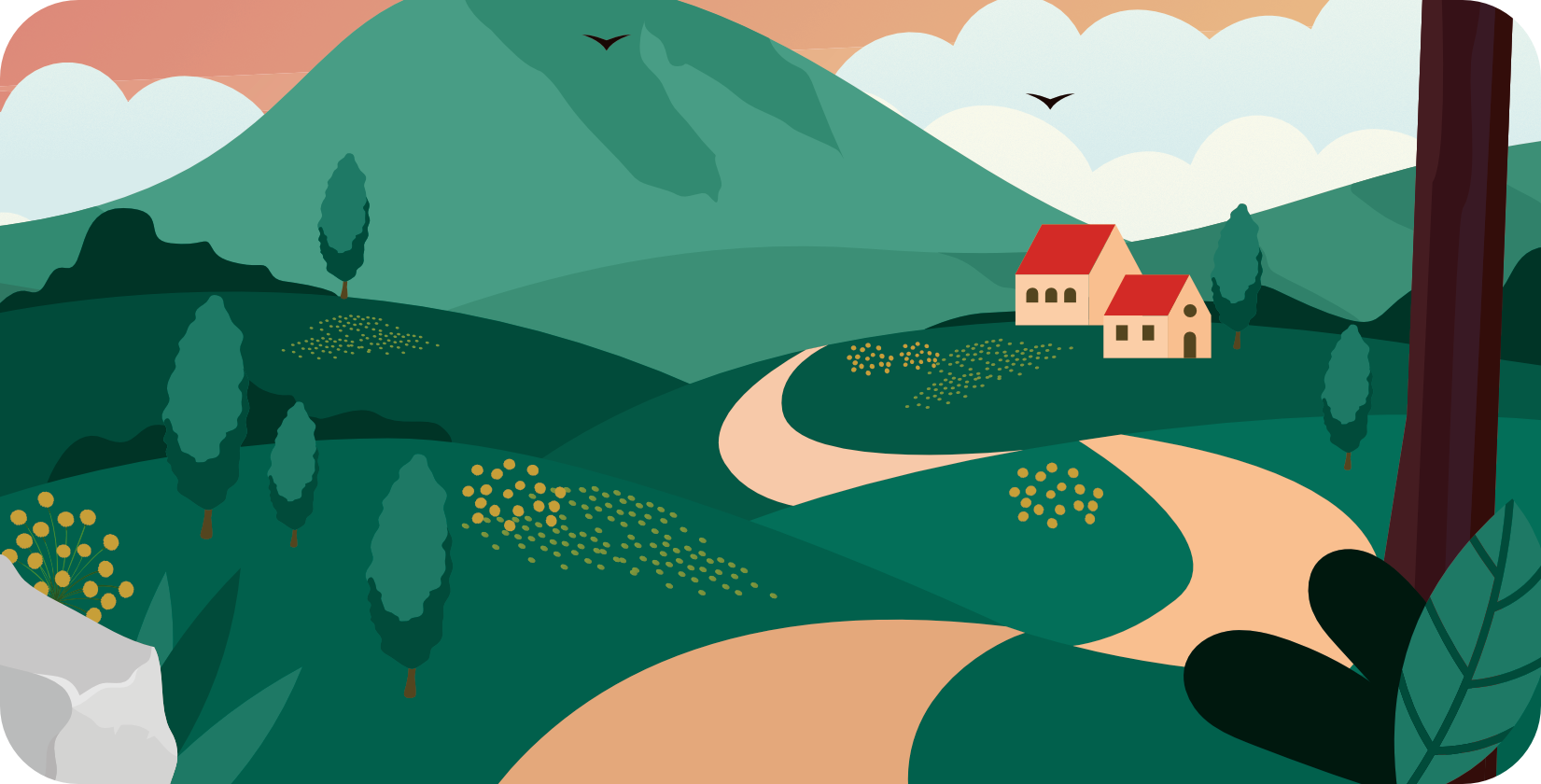
It is key that tools should include the multifunctional benefits and competing pressures of land use change to give a holistic picture of land use opportunities and constraints. Stakeholders want information presented in a clear and easy to interpret way which can help them understand business risks and make better use of financial opportunities that would support land use change.
The group also came to an understanding that design sprints are an effective way to bring together diverse stakeholders with common goals to co-design new solutions. Design sprints and similar activities can foster a strong sense of community among stakeholders engaged in or impacted by land use decision making.
